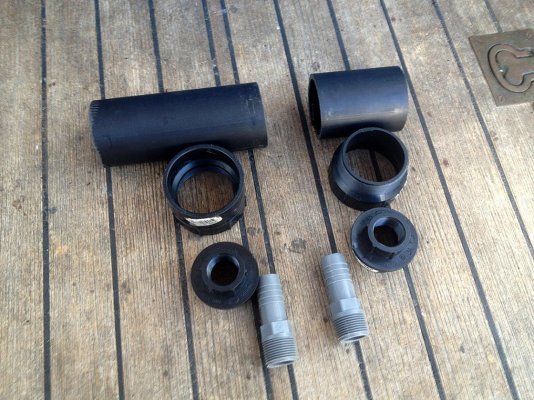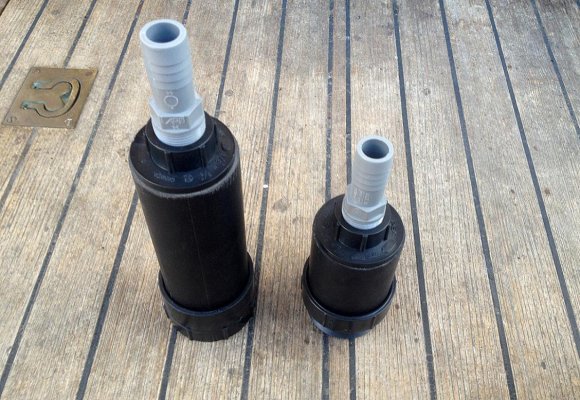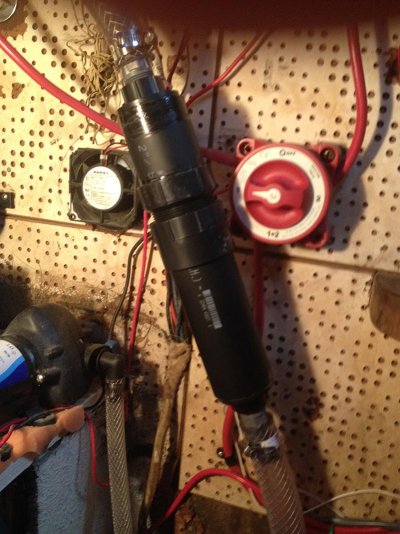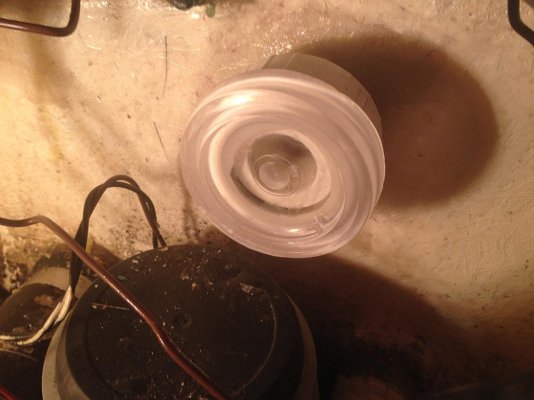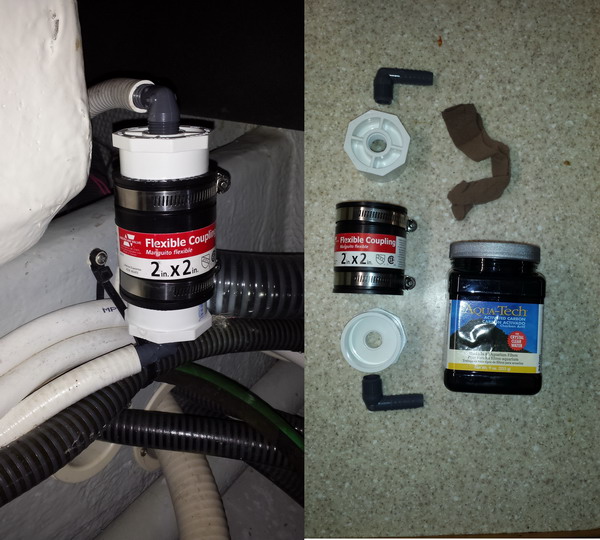Fotoman
Guru
- Joined
- Nov 12, 2009
- Messages
- 649
Ever since I bought my boat 6 years ago, my holding tank has been smelling. Mostly from the vent, not so much inside the boat, thank god. Nevertheless, it was always embarrassing to know my dock neighbors would get a whiff every time I would flush.  No matter how much blue stuff I would drop in the toilet to try to hide the smell, it just wouldn't get rid of it. It was fine for a few days after a pump out but would come back as soon as there was a bit of stuff in the tank.
No matter how much blue stuff I would drop in the toilet to try to hide the smell, it just wouldn't get rid of it. It was fine for a few days after a pump out but would come back as soon as there was a bit of stuff in the tank.
So this year I decided to tackle the issue and fix it once and for all. I found this post about a vent filter and thought it was the solution to my problem.
Chip & Debbie Willis on s\v Elegant'sea: SEALAND. SaniGard™ Holding Tank Vent Filter re-built and working, fine!
I figured I could skip the step where I buy an expensive first filter and just build one from cheap parts at Home Depot. But I soon realized that it wouldn't really get rid of the problem, only mask it. After a bit of research on holding tanks I understood a few important things. It's all about air flow and the good versus bad bacteria that live in your tank. In short, a good air flow will allow for the good kind of bacteria that produce non smelly gases. The other thing I learned is that most holding tanks are built with a vent that is way too small to allow for a good air flow. The original vents are designed to allow for air to be displaced when filling or emptying. That's it.
So I thought about it long and hard and came up with a solution. First I installed a new bigger vent (5/8) instead of the 3/8 that was in place. Already a nice improvement. But since I had all the parts to build a filter I had an idea. Why not build an "active vent". Something that would circulate air. So on top of the parts I already had for the filter, I also bought a small 12v computer fan that I fitted inside the casing. The size of the hose for that additional vent is 3/4.
The fan is always running. The air displacement is not big of course but since it's constant, it's enough to bring the fresh flow of oxygen needed for the good bacteria to live. This totally solved the odor that was coming out of my vent. All and all the cost was about $25 and it took about an hour to build and install.
And while I was at it I also decided to solve another problem I had. It was always a guessing game for me to know when it was time to go for a pump out. Didn't have a gauge and didn't feel like buying an expensive electric one. So again I got a few cheap plumbing parts from Home Depot and build a "peep hole" about 1/3 from the top of the tank (poop hole might be a more appropriate name. lol). When I see the level of liquid through the glass, I know it's time. I can even unscrew the glass to clean it. Cost: less than $10.
 No matter how much blue stuff I would drop in the toilet to try to hide the smell, it just wouldn't get rid of it. It was fine for a few days after a pump out but would come back as soon as there was a bit of stuff in the tank.
No matter how much blue stuff I would drop in the toilet to try to hide the smell, it just wouldn't get rid of it. It was fine for a few days after a pump out but would come back as soon as there was a bit of stuff in the tank. So this year I decided to tackle the issue and fix it once and for all. I found this post about a vent filter and thought it was the solution to my problem.
Chip & Debbie Willis on s\v Elegant'sea: SEALAND. SaniGard™ Holding Tank Vent Filter re-built and working, fine!
I figured I could skip the step where I buy an expensive first filter and just build one from cheap parts at Home Depot. But I soon realized that it wouldn't really get rid of the problem, only mask it. After a bit of research on holding tanks I understood a few important things. It's all about air flow and the good versus bad bacteria that live in your tank. In short, a good air flow will allow for the good kind of bacteria that produce non smelly gases. The other thing I learned is that most holding tanks are built with a vent that is way too small to allow for a good air flow. The original vents are designed to allow for air to be displaced when filling or emptying. That's it.
So I thought about it long and hard and came up with a solution. First I installed a new bigger vent (5/8) instead of the 3/8 that was in place. Already a nice improvement. But since I had all the parts to build a filter I had an idea. Why not build an "active vent". Something that would circulate air. So on top of the parts I already had for the filter, I also bought a small 12v computer fan that I fitted inside the casing. The size of the hose for that additional vent is 3/4.
The fan is always running. The air displacement is not big of course but since it's constant, it's enough to bring the fresh flow of oxygen needed for the good bacteria to live. This totally solved the odor that was coming out of my vent. All and all the cost was about $25 and it took about an hour to build and install.
And while I was at it I also decided to solve another problem I had. It was always a guessing game for me to know when it was time to go for a pump out. Didn't have a gauge and didn't feel like buying an expensive electric one. So again I got a few cheap plumbing parts from Home Depot and build a "peep hole" about 1/3 from the top of the tank (poop hole might be a more appropriate name. lol). When I see the level of liquid through the glass, I know it's time. I can even unscrew the glass to clean it. Cost: less than $10.


